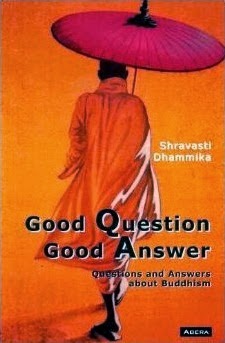This small booklet was complied and edited from talks given by Venerable Ajahn Sumedho on the central teaching of the Buddha: that the unhappiness of humanity can be overcome through spiritual means.
The teaching is conveyed through the Buddha's Noble Truths, first expounded in 528BC in the Deer Park at Sarnath near Varanasi and kept alive in the Buddhist world ever since.
Venerable Ajahn Sumedho is a bhikkhu (mendicant monk) of the Theravada tradition of Buddhism. He was ordained in Thailand in 1966 and trained there for ten years. He is currently the Abbot of the Amaravati Buddhist Monastery as well as teacher and spiritual guide to many Bhikkhus, Buddhist nuns and lay people.
This boolet has been made available through the voluntary efforts of many people for the welfare of others.
THE FIRST NOBLE TRUTH
What is the Noble Truth of Suffering ? Birth is suffering, ageing is suffering, and death is suffering. Dissociation from the loved is suffering, not to get what one wants is suffering: in short the five categories affected by clinging are suffering. There is this Noble Truth of Suffering: such was the vision, insight, wisdom, knowing and light that arose in me about things not heard before.
This noble Truth must be penetrated by fully understanding suffering: such was the vision, insight, wisdom, knowing, and light that arose in me about things not heard before. This Noble Truth has been penetrated by fully understanding suffering: such was the vision, insight, wisdom, knowing and light that arose in me about things not heard before (Samyutta Nikaya LVI,II)
THE SECOND NOBLE TRUTH
What is the Noble Truth of the Origin of Suffering ? It is craving which renews being and is accompanied by relish and lust, relishing this and that: in other words, craving for sensual desires, craving for being, carving for non-being. But whereon does this craving arise and flourish ? Wherever there is what seems lovable and gratifying, thereon it arise and flourishes. There is this Noble Truth of the Origin of Suffering: such was the vision, insight, wisdom, knowing and light that arose in me about things not heard before. This Noble Truth must be penetrated to by abandoning the origin of suffering.....
This Noble Truth has been penetrated to by abandoning the origin of suffering: such was the vision, insight, wisdom, knowing and light that arose in me about things not heard before. (Samyutta Nikaya LVI,II)
THE THIRD NOBLE TRUTH
What is the Noble Truth of the Cessation of Suffering ? It is the remainder-less fading and cessation of that same craving; the rejection, relinquishing, leaving and renouncing of it. But whereon is this craving abandoned and made to cease? Wherever there is what seems lovable and suffering, thereon is abandoned and made to cease.
There is this Noble Truth of the Cessation of Suffering: such was the vision, insight, wisdom, knowing and light that arose in me about things is not heard before. this noble truth must be penetrated to by realising the Cessation of Suffering.....
The Noble Truth has been penetrated to by realising the Cessation of Suffering: such was the vision, insight, wisdom, knowing and light that arose in me about things is not heard before. (Samyutta Nikaya LVI,II)
THE FOURTH NOBLE TRUTH
What is the Noble Truth of the Way Leading to the Cessation of Suffering ?It is the Noble Eight-fold Path, that is to say: Right View, Right Intention, Right Speech, Right Action, Right Livelihood, Right Effort, Right Mindfulness and Right Concentration.
There Noble Truth of the Way Leading to the Cessation of Suffering: such was the vision, insight, wisdom, knowing and light that arose in me about things is not heard before....... This Noble Truth must be penetrated to by cultivating the Path..........
This Noble Truth must be penetrated to by cultivating the Path:such was the vision, insight, wisdom, knowing and light that arose in me about things is not heard before. (Samyutta Nikaya LVI,II)
The book "Four Noble Truth" published by Amaravati Publications, Amaravati Buddhist Centre,
Great Gaddesden, Memel Hempstead,
Hertfordshire HP1 3BZ.
This Book is strictly for free distribution, it is not for sale.
Contact:
The Corporate Body of Buddha Educational Foundation
11F., 55 Hang Chow South Road Sec.1, Taipei, Taiwan, R O C.
Tel: 866 - 2 - 23951198, Fax: 866 - 2- 23913415
Email: overseas@budaedu.org
Website:htpp://www.budaedu.org




.jpg)
.jpg)



.jpg)

.jpg)





